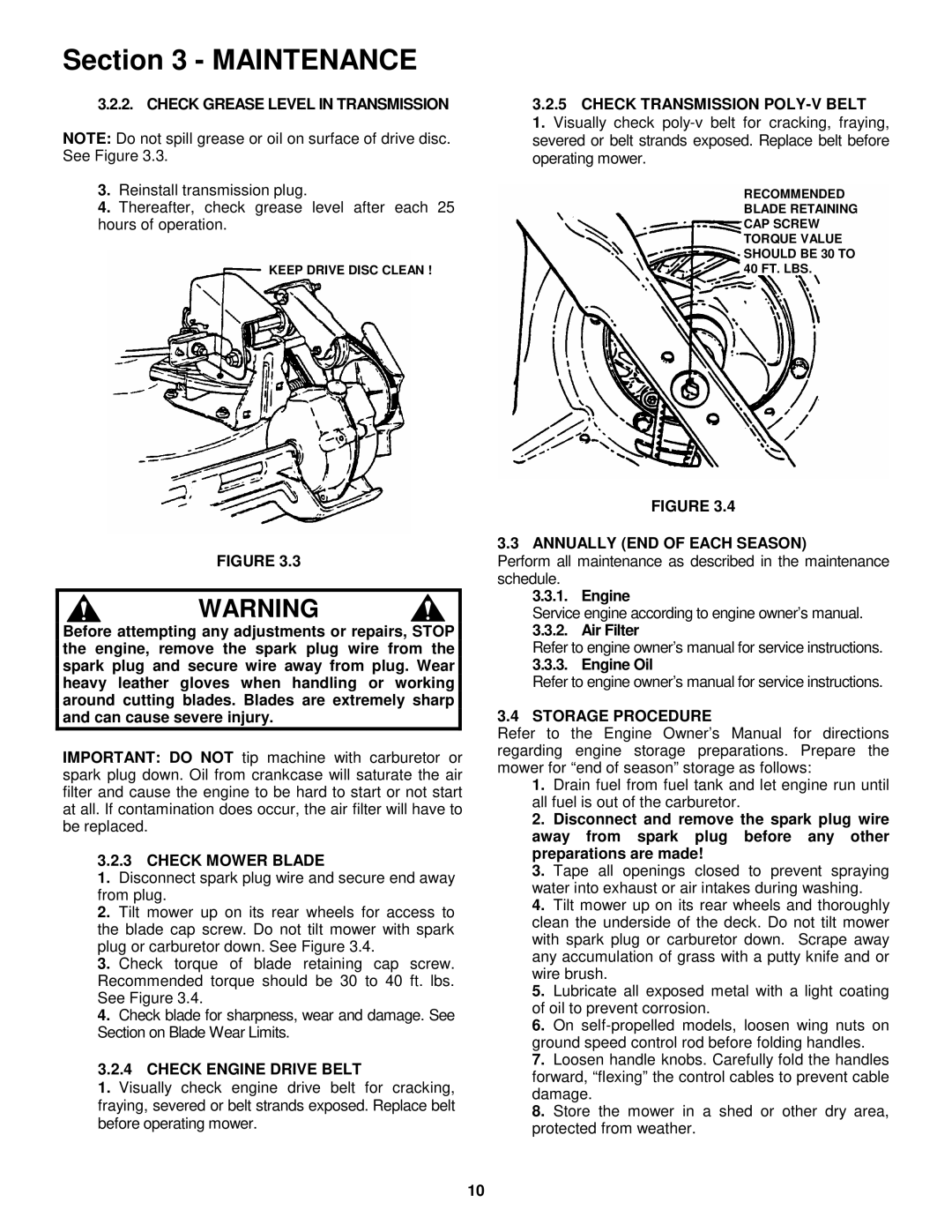MCR5215014KWV, EMRP215014B, MRP218014T, MR5014B, MCRP215014KWV specifications
The Snapper MCRP215014KWV, MR5014B, MRP218014T, EMRP215014B, and MCR5215014KWV represent a suite of advanced lawn care and landscaping equipment designed for optimal performance and user experience. These models incorporate cutting-edge technology and engineering to deliver reliability, efficiency, and ease of use for both residential and commercial operators.One of the standout features of these models is their powerful engines, which provide robust performance and enable them to tackle a vast array of mowing conditions. The engines are designed for durability, ensuring long life and reduced maintenance. The high torque output allows for effective cutting of not just grass but also thicker weeds and tougher vegetation, making them versatile tools for any lawn care enthusiast.
Another significant characteristic of these Snapper models is their superior cutting deck design. The cutting deck is engineered to deliver precise cuts and has the capability to discharge clippings efficiently, leaving a clean and tidy lawn. Some models in the suite feature a three-in-one cutting system that allows for mulching, bagging, or side discharge options, providing users with flexibility based on their needs and preferences.
Ergonomics plays a crucial role in the design of these mowers. The Snapper models come with adjustable handles, allowing users to set their desired height for comfortable operation. Easy-to-reach controls enhance usability, making the mowing process less labor-intensive. A self-propulsion feature is available on select models, enabling effortless maneuvering across diverse terrains and inclines.
Technological advancements are prominently featured in these mowers, with some equipped with advanced ignition systems for reliable starts in varying weather conditions. Certain models also integrate enhanced fuel efficiency technologies, minimizing fuel consumption while maximizing performance.
Safety is not overlooked, with several built-in safety features designed to protect the operator and bystanders during operation. These include blade brake systems, which immediately halt blade activities when the user releases the handle, mitigating risks associated with unintentional injuries.
In conclusion, the Snapper MCRP215014KWV, MR5014B, MRP218014T, EMRP215014B, and MCR5215014KWV models are engineered to meet the demands of modern lawn care. Their combination of powerful engines, versatile cutting options, ergonomic design, and advanced safety features demonstrates Snapper’s commitment to delivering high-quality tools for lawn maintenance and landscaping needs. Whether for residential use or professional landscaping, these models stand out for their performance and reliability.

